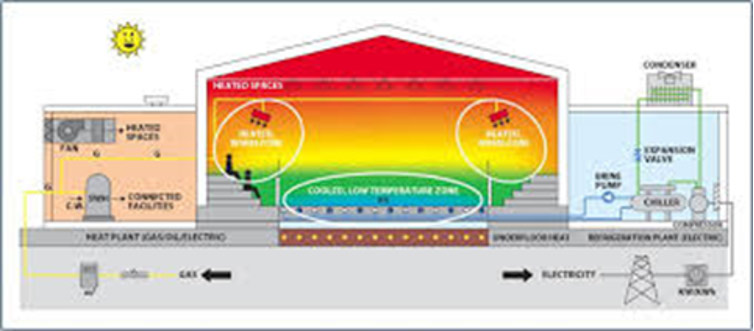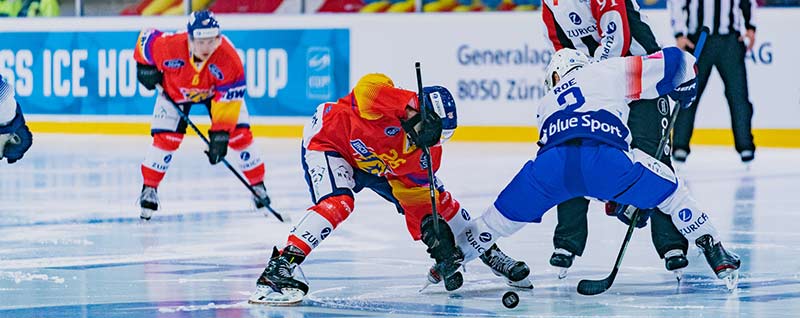Modifying the Rink Works; Masks on the Players Does Not
The governors of Massachusetts, Vermont, Maine, Minnesota, and other states have closed indoor ice rinks due to because they are COVID infection sites. Community skating rinks are designed to keep a slab of ice frozen for skaters. The ventilation systems exhaust warm air out through the ceiling; the remaining cold air sinks to the floor, covering the ice like a blanket. A low wood wall surrounds the skating area. Tall panels of safety glass mounted above the wall protects spectators from flying pucks. The two together act like a cup, holding the cold air unmoving over the skating surface. Good for the integrity of the ice; not necessarily good for the players.
In a community rink, a temperature inversion forms over the ice as warm air is exhausted through the roof. The cold air cap traps gases and particulates, much like a temperature inversion over Los Angeles traps smog.
In a 1999 study, the cold cap above the ice was shown to trap nitrogen dioxide and carbon dioxide from a propane-powered Zamboni. An aerosol particle like COVID accumulates under the cold air inversion. This is the likely cause of the ice rink COVID infections. The CDC has identified hockey arenas as COVID spreading sites but has not identified the mechanism. Hockey players do not have sustained contact with each other. However, the rapid deep exhaling of emitters fill the cap space with huge amounts of COVID, and the other players rapid deep inhaling are consuming huge amounts of COVID
The diagram below shows warm air near the ceiling, a pool of cold air near the floor, and minimal circulation. The blue area is the confined area where the COVID collects.

Mizyar Karampour from diva-portal.org
Fixing the Players
Having players wear masks under their helmets will not fix the problem. A high school hockey player sprinting down the ice exhales enough air to fill one fifty-five-gallon drum per minute. Put ten players on the ice, put new teams on the ice every sixty-minutes, and the concentration of COVID in the air will exceed the threshold to cause infection. Any mask material — cotton, polyester, surgical, or N95 — facing that volume of air and COVID — will be saturated in minutes. Masks will offer little protection to the wearer or the other players.
Some states have reopened skating rinks with testing of all participants. However, Dr. Isaac Bogoch, an infectious diseases physician and consultant to the National Hockey League, admits testing alone is insufficient. He also identifies maximum exertional breathing as a risk.
Placing one’s faith in periodic testing will provide a false sense of security. The false-negative rate on the “gold standard” PCR COVID test ranges is twenty percent on symptomatic patients. Observe that infections in the professional football and baseball leagues, where regular testing of asymptomatic players is required, as many as 15% of players are sidelined from week to week. One of my patients did not turn positive till his third test on day 9 of the illness. Testing has many shortcomings.
The current COVID surge will only make this worse. Before the surge, there might be one asymptomatic emitter with a false negative test on the ice at one time: with the surge, the number of emitters could be half the players. You cannot fix the rink by fixing the players.
Fixing the Rink
Fixes for the arena include dilution, direction, and decontamination. The introduction of fresh air in sufficient volume will dilute the concentration of COVID below levels where it can cause infections. Directing airflow across the ice to disrupt the cold air inversion will distribute COVID throughout the arena, where it can be exhausted into the outside air. Installing HEPA filters (technically MERV 13) on the ventilation system will decontaminate the air by trapping COVID. However, the cost of heating, more giant fans, and filters is prohibitive.
The changing areas will remain risky. Social distancing and mask-wearing are not adequate in a locker room, on the benches, or in carpools traveling to the rink.
However, the one practical solution is to open the doors to the building and remove the glass barriers (no spectators allowed), destabilizing the cold air cap. Depending on the arena’s design, one may need to place fans blowing in at one end of the rink and blowing out at the other end.
This strategy converts an indoor rink to an outdoor rink. There are no COVID clusters associated with outside skating rinks. However, Canada has huge skating areas in their city centers, including frozen rivers miles ling. They have placed attendance limits on outdoor skating venues to prevent a potential super spreader event of catastrophic proportions.
The final solution is to abandon ice and ice-skates for inline skates and play the 2020–2021 season on outdoor paved lots. However, be aware congregating around a heat source also has some risk.

